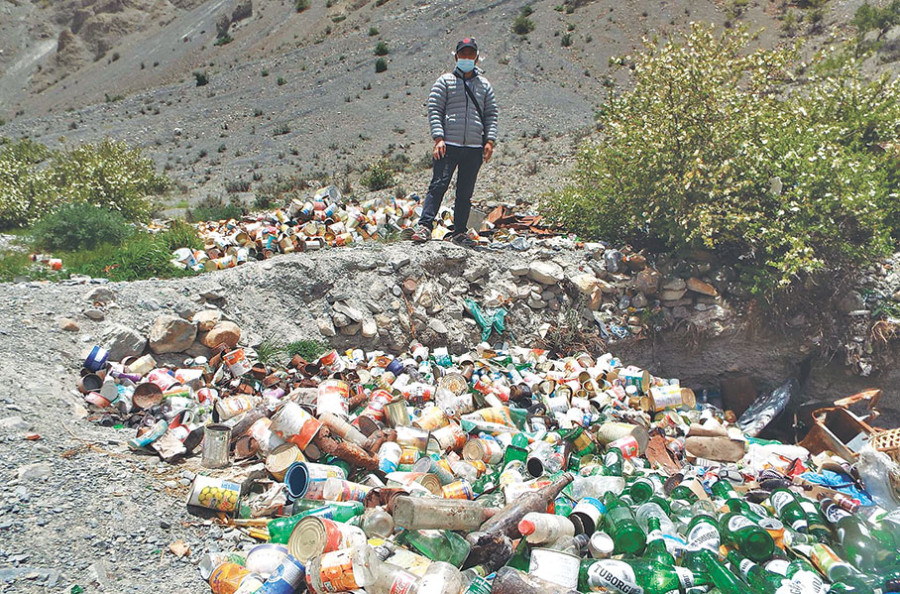Money
Littering on Annapurna Circuit raises concerns
The Annapurna Circuit trekking route draws hordes of foreign and domestic sightseers who inject cash into the local economy, but leave behind mounds of trash on the trails raising concerns over the sustainability of adventure tourism Locals have complained that trekkers and mountaineers are polluting the environment by their littering.
Aas Gurung & Dipak Pariyar
The Annapurna Circuit trekking route draws hordes of foreign and domestic sightseers who inject cash into the local economy, but leave behind mounds of trash on the trails raising concerns over the sustainability of adventure tourism Locals have complained that trekkers and mountaineers are polluting the environment by their littering. There are no proper mechanisms to ensure that waste disposal rules are being followed.
Garbage can be seen scattered all over the trail from Thorung Base Camp to Thorung Pass at 5,416 metres, and from Tilicho Base Camp to Tilicho Lake at 4,919 metres.
“Visitors throw the wrapper on the trailside after consuming packaged foods. As a result, piles of noodle, chocolate and biscuit wrappers, bottles and other items end up in landfills on the trekking routes,” said Chhiring Lopsang Gurung, proprietor of the Hotel Tilicho in Manang. “Improper waste management is the reason behind this. The problem can be solved if trekkers are made aware of the situation,” he added.
Mitchung Gurung, proprietor of the Hotel Base Camp and Lodge at Thorung La, said that hotels provide dustbins to put waste in, but they are not available on the trekking routes. “Normally, trekkers carry packaged foods and chocolate, bottled water and drinks when they go trekking. The wrappers and bottles are thrown away. The piles of trash have become a big concern.”
Some locals said that the amount of garbage along the trails increased after the region started receiving a greater number of Nepali trekkers.
Foreigners are urged to bring back the waste they produce and dispose of it in designated areas, said Binod Gurung, president of the Tourism Entrepreneurs Committee in Manang. “But Nepali trekkers are not given any instructions regarding trash disposal.”
The popular trekking route saw a sharp jump in domestic visitors this year. “With the increase in footfall, garbage has also increased.” He added that local tourism entrepreneurs had been cleaning parts of the trails.
Babu Lal Tiruwa, chief of the Annapurna Conservation Area Project (ACAP), said that the practice of throwing waste on the mountain trails had been increasing. Only a small amount of trash is brought back, which means that the rest is left at base camp, he said. Climbing expedition members need to obtain a permit from the Nepal Mountaineering Association. A mountaineer has to deposit $500 as garbage fee. If they do not bring back their waste, the fee is forfeited.
“They bring back a small amount of waste to reclaim the garbage deposit. We don’t keep records of the amount of materials they take with them when they embark on their expedition,” he said. It is difficult to assess the exact amount of garbage they produce, he added.
Tiruwa said that it had become difficult for the ACAP to dispose of the garbage that piles up in the trash bins kept on the trail. “Due to poor roads and transportation facilities, it is difficult to recycle or dispose of the garbage.”




 20.12°C Kathmandu
20.12°C Kathmandu















